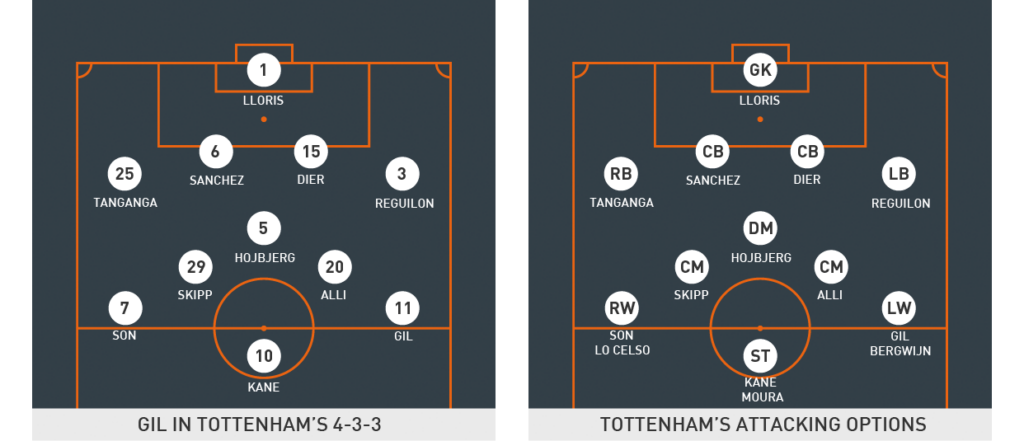
bryan gil
Tottenham, 2021–
Profile
Bryan Gil cost Tottenham £21.4m plus Erik Lamela when, aged 20 in July 2021, he arrived from Sevilla. A promising wide player seen as having the potential to contribute to a team being rebuilt after the high-profile departures of Gareth Bale, Toby Alderweireld, José Mourinho and more, his arrival at the club was delayed by him competing with Spain at Tokyo 2020.
"I like him a lot," said his manager at international level, Luis Enrique. "From the first talk I have had with him, I see him as very mature and very calm."
Tactical analysis
Gil is a left-footed wide player capable of performing as both a wide forward in a front three or wide in a midfield four. For all of his experience on both sides of the pitch, it is towards the left where he is most proven, and where he particularly impresses through the quality he shows on the ball (below) when dribbling and when quickly changing direction in his attempts to cover significant distances.
Like perhaps only the very best, Gil can continually twist and turn in numerous directions and do so repeatedly and at speed, making him even more valuable for a team confronted with a compact defensive block or an aggressive counter-press. While his attempted dribbles are largely led by his left foot, he offers an element of disguise and drops of the shoulder to manipulate opponents seeking to press him on to his right; his ability to keep the ball away from pressure while maintaining his sense of balance has even drawn comparisons to a young Lionel Messi.
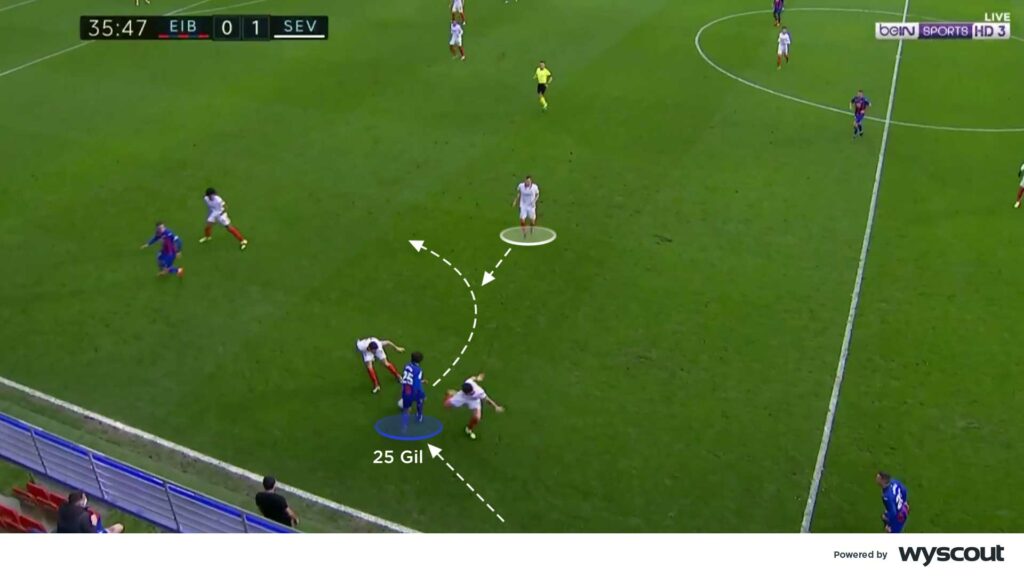
Those same qualities make him capable of helping to progress possession over lengthier distances. He is efficient with the ball at his feet, but not necessarily exceptionally fast, so he therefore keeps the ball close as he travels and relies on his balance to ensure he can do so without slowing down. He complements doing so by attacking his opponents via touches of the ball taken at a consistent pace, so that defenders match his stride, and then taking an additional touch that changes the pattern of his run as he commits to moving around that opponent, often while dropping a shoulder, and it is that timing that enhances his potential when one-on-one.
At the end of those runs he can deliver both accurate passes (below) and crosses – most commonly the latter. His confidence when receiving possession in wide territory contributes to him drawing full-backs towards him and then beating them, one-on-one, via his dribbling ability or by combining with a central midfielder to penetrate through the inside channel.
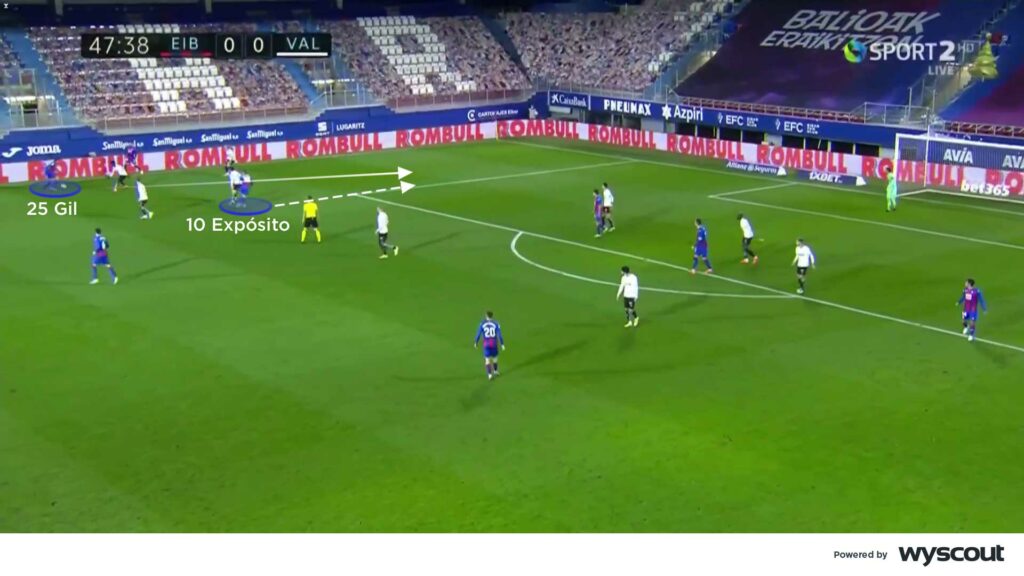
Against full-backs willing to retreat Gil capitalises on the increased space he is afforded by delivering crosses (below) or combining with the full-back on his team who has advanced to offer support. If he can improve his ability to decelerate as he plays the ball so that the accuracy of his crosses isn't compromised, he can become even more effective.
He, regardless, complements those abilities with the threat he poses on goal. He is yet to prove that he has the necessary quality and control required when shooting from distance or when attempting to cut infield on to his left foot, from the right, but when making runs in behind or penetrating forwards off the ball before receiving the chance to shoot he is considerably more potent. A lack of physicality contributes to his shots lacking power when he is further out, but if that is something he develops he can not only shoot from range, but drive forwards with the ball and hold off those who attempt to challenge him.
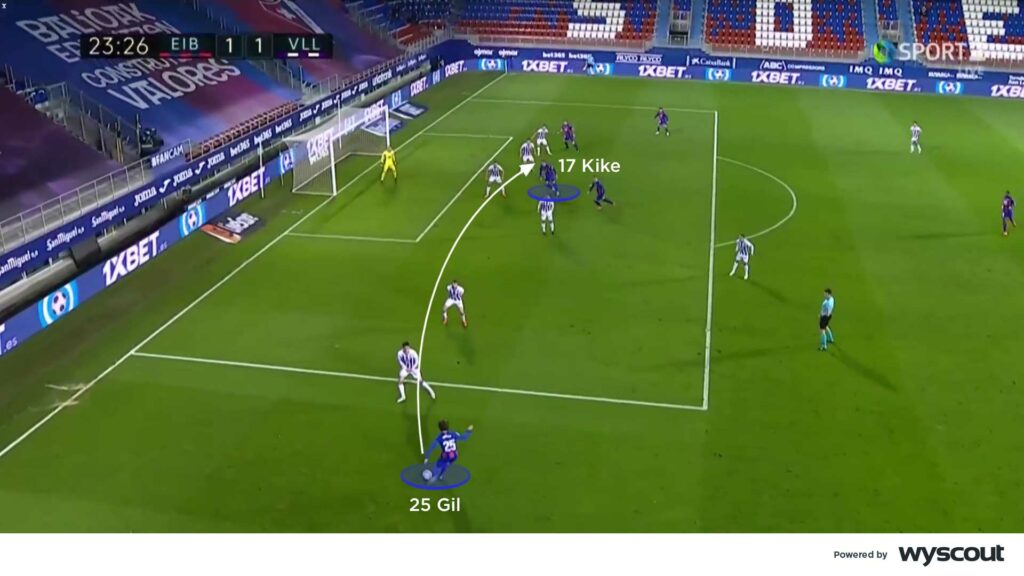
Role at Eibar
Gil spent 2020/21 on loan at Eibar from Sevilla, and for the team that finished bottom of La Liga, he registered the division's fourth highest number of dribbles and attempted one-on-ones, making him a key player. Retaining a particularly wide position (below), he was consistently supported by their left-back; it was when he struggled to progress forwards, perhaps if marked by more than one opponent, that he moved infield to receive, doing in the knowledge that that left-back would then overlap him.
He also registered the fifth highest number of crosses, having often been given responsibility for crossing the ball into the penalty area regardless of whether he or their left-back had advanced; if the latter, possession was regularly played back to him to do so; if the former, he regularly created his own space from which to cross. Eibar offered significantly fewer rotations and off-the-ball movements towards the left than right, making them largely reliant on Gil's abilities.

That they were most commonly organised into either a 4-4-2 or 4-2-3-1 regularly gave Gil two targets. Their striker Kike García, via aerial crosses, represented their greatest attacking threat; in a 4-4-2 he was most commonly paired with either Sergi Enrich or Yoshinori Muto and attacked one post while his strike partner attacked the other; in their 4-2-3-1 they attacked with Kike as the nine supported by their attacking midfielders, who often favoured cut-backs.
There were rarer occasions when Gil featured from the right (below), and in front of a significantly more attack-minded right-back. Alejandro Pozo and Roberto Correa both complemented him when they were that right-back, and contributed to his desire to cut infield both with and without the ball.
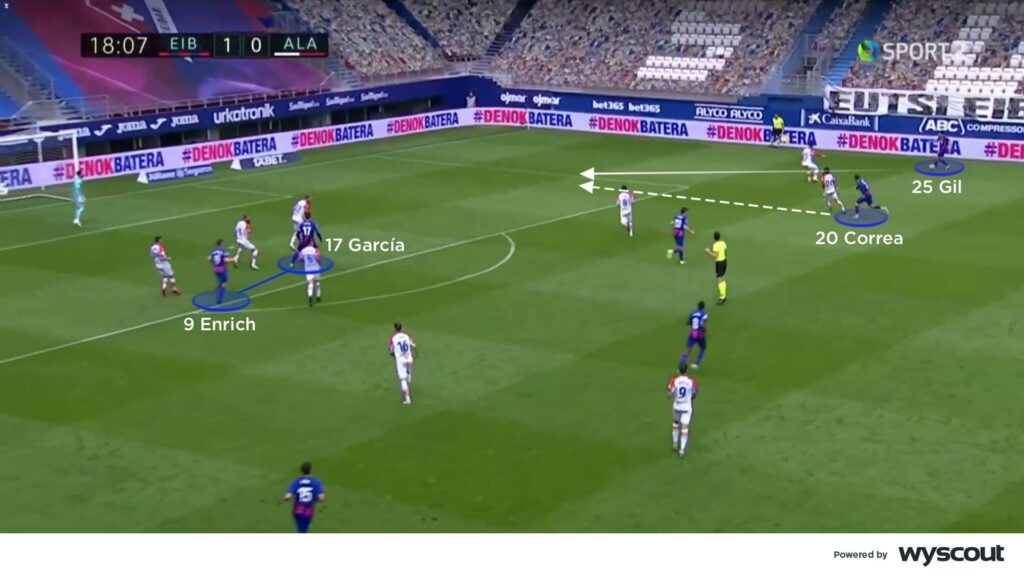
When targeting the relevant full-back, from either side of the pitch, Gil demonstrated the accuracy of his penetrative passing through the inside channels. His through-balls also reached their front two, even if they moved wide to support an advancing full-back. The angle of his passes proved more effective when he cut infield from the right, and partly because of his increased ability to disguise his intentions from there – he regularly cut the ball back across his body to deceive opponents, and therefore increase the time and space presented to the target of his pass as they moved in behind.
As the season progressed, so the variety in Gil's play in the final third increased. He adjusted to also remain wide on the right and therefore encourage underlapping runs from their right-back before playing incisive forward passes, often to beat his opposing left-back as that left-back moved towards him. He, similarly, learned to take touches infield before delivering inswinging crosses targeting the runs of their most advanced attacker and those attacking from the left or across goal.
